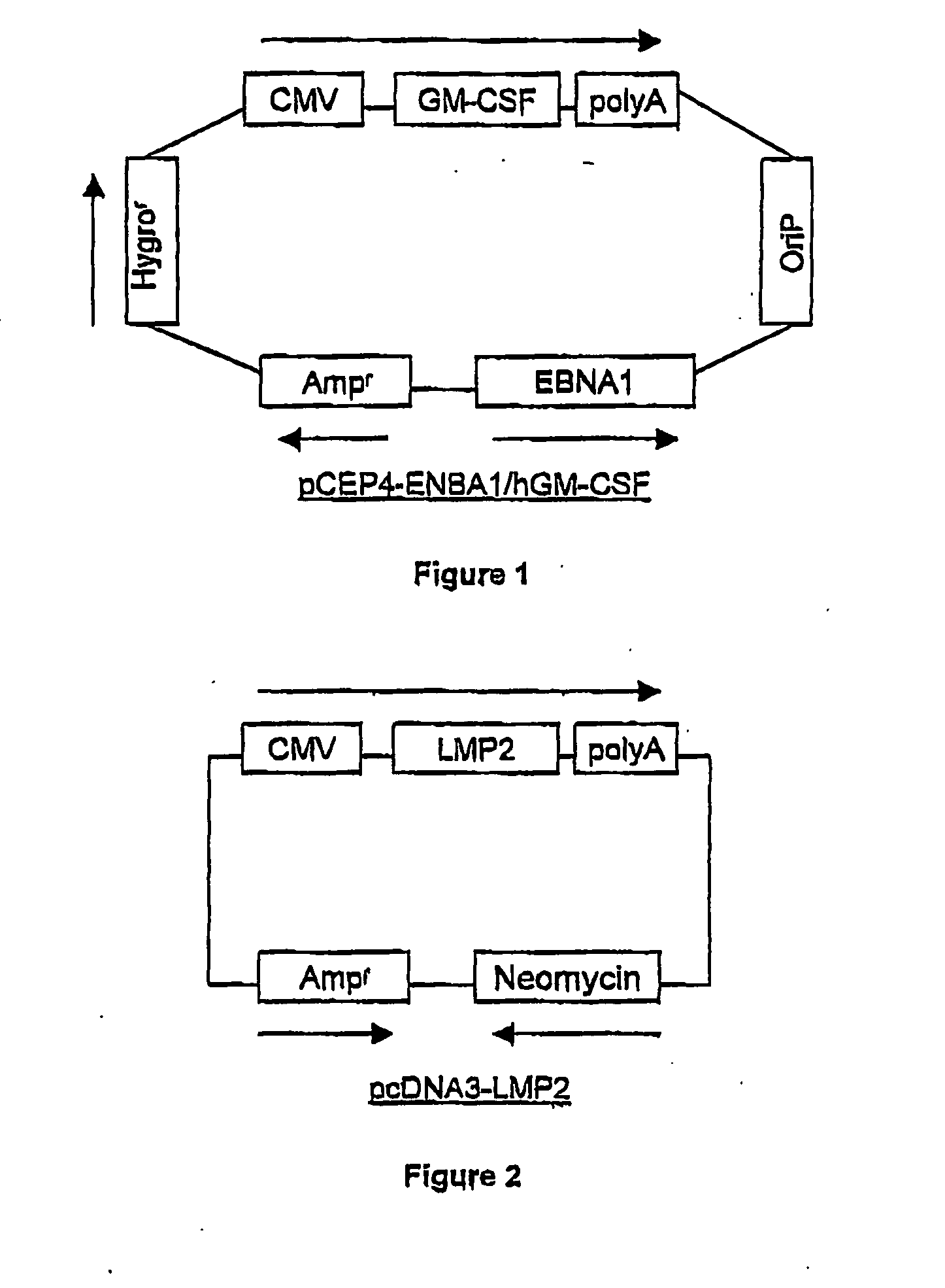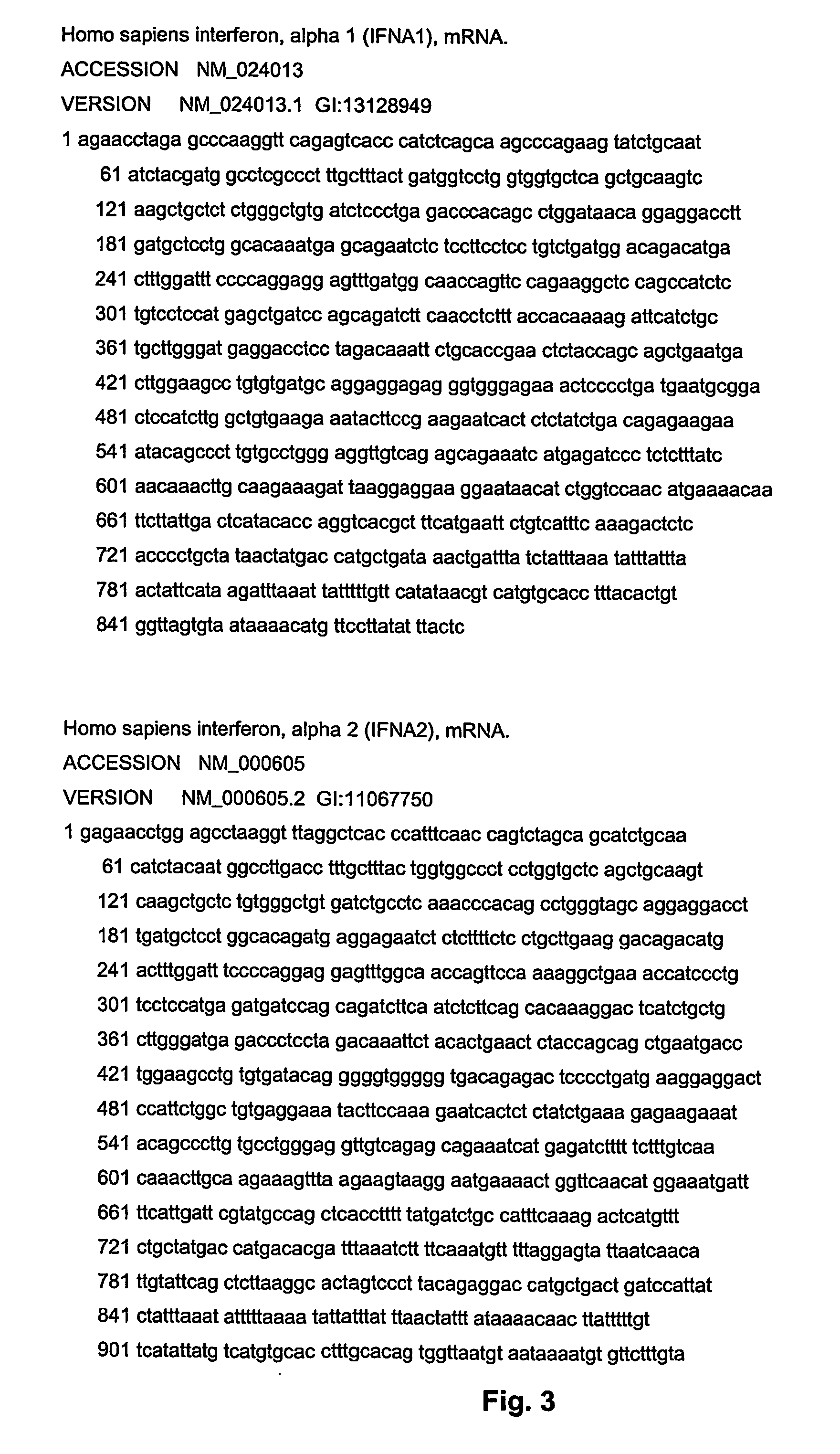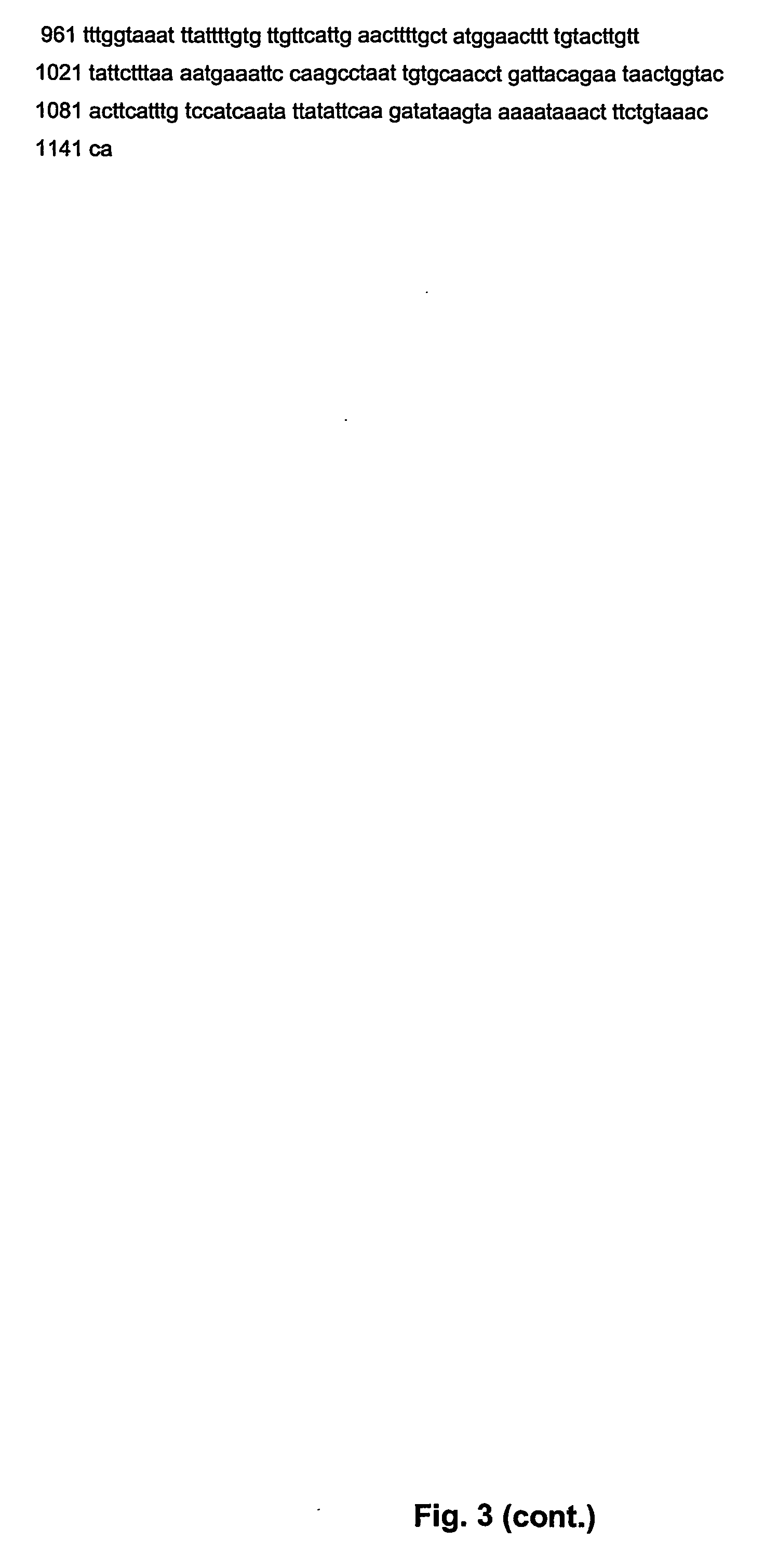Cancer immunotherapy with a viral antigen-defined, immunomodulator-secreting cell vaccine
a cancer immunotherapy and immune-modulator-secreting cell technology, applied in the field of cancer immunotherapy and cancer vaccine development, can solve the problems of not being able to target such vaccines and fully evaluate their anti-tumor immune responses, and little is known about most tumor rejection antigens for the majority of human cancers
- Summary
- Abstract
- Description
- Claims
- Application Information
AI Technical Summary
Problems solved by technology
Method used
Image
Examples
example 1
[0094] This example describes the generation of an EBV antigen-specific, GM-CSF-secreting cellular vaccine.
[0095] The allogeneic human erythroleukemia cell line K562 was transfected with a plasmid containing human GM-CSF operably linked to the cytomegaloviral (CMV) promoter, a hygromycin resistance gene, and the Epstein-Barr virus (EBV) nuclear antigen-1 (EBNA1) gene, which is required for the function of the plasmid origin of replication. The plasmid, designated pCEP4-EBNA1 / hGM-CSF, is shown in FIG. 1. Hygromycin-resistant clones were screened for the secretion of GM-CSF. A K562-EBNA1 / GM-CSF clone producing over 2,000 ng of GM-CSF / 106 cells / 24 hrs was selected. The high degree of expression of this clone minimizes the number of cells needed for vaccination, while leaving the margin for efficacy well above the threshold of 36 ng / 106 cells / 24 hrs. The K562-EBNA1 / GM-CSF clone also was determined to express EBNA1 by Western blot using a monoclonal antibody to EBNA1.
[0096] The K562-EB...
example 2
[0097] This example describes an EBV antigen-specific, GM-CSF-secreting cellular vaccine for treating EBV+ tumors.
[0098] Patients with EBV+ Hodgkin's lymphoma (HL) or nasophaaryngeal carcinoma (NPC) at high risk for relapse after primary therapy or those with relapsed or metastatic disease are treated. The patients are given a first vaccination six weeks after the completion of primary therapies, such as chemotherapy, radiation, or a combination thereof. Follow-up vaccinations are given monthly thereafter for a total of four vaccinations, spanning weeks 6 to 18 during immune reconstitution. On the day of vaccination, the cellular vaccine (K562-EBNA1 / LMP2 / GM-CSF) is removed from the liquid nitrogen storage and rapidly thawed in a 37° C. water bath. Viability of the cellular vaccine is assessed by trypan blue exclusion, and the number of viable cells is used for calculation of dosages. The patients are intradermally injected with a total dose of 3.3×107 cells per vaccination divided ...
example 3
[0101] This example describes the generation of an HPV antigen-specific, GM-CSF-secreting cellular vaccine.
[0102] The allogeneic human erythroleukemia cell line K562 was transfected with a plasmid containing human GM-CSF operably linked to the cytomegaloviral (CMV) promoter, a hygromycin resistance gene, and the Epstein-Barr virus (EBV) nuclear antigen-1 (EBNA1) gene, which is required for the function of the plasmid origin of replication. The plasmid, designated pCEP4-EBNA1 / hGM-CSF, is shown in FIG. 1. Hygromycin-resistant clones were screened for the secretion of GM-CSF. A K562-EBNA1 / GM-CSF clone producing over 2,000 ng of GM-CSF / 106 cells / 24 hrs was selected. The high degree of expression of this clone minimizes the number of cells needed for vaccination, while leaving the margin for efficacy well above the threshold of 36 ng / 106 cells / 24 hrs. The K562-EBNA1 / GM-CSF clone also was determined to express EBNA1 by Western blot using a monoclonal antibody to EBNA1.
[0103] The K562-EB...
PUM
| Property | Measurement | Unit |
|---|---|---|
| Frequency | aaaaa | aaaaa |
| Immunogenicity | aaaaa | aaaaa |
| Heat | aaaaa | aaaaa |
Abstract
Description
Claims
Application Information
 Login to View More
Login to View More - R&D
- Intellectual Property
- Life Sciences
- Materials
- Tech Scout
- Unparalleled Data Quality
- Higher Quality Content
- 60% Fewer Hallucinations
Browse by: Latest US Patents, China's latest patents, Technical Efficacy Thesaurus, Application Domain, Technology Topic, Popular Technical Reports.
© 2025 PatSnap. All rights reserved.Legal|Privacy policy|Modern Slavery Act Transparency Statement|Sitemap|About US| Contact US: help@patsnap.com



